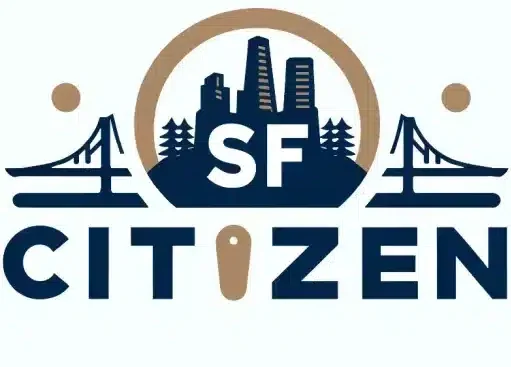The Pacific Exchange, located in the heart of San Francisco’s Financial District, has been a pivotal institution in the city’s economic landscape for over a century. This historic building, with its stunning architectural features, has played a significant role in shaping San Francisco’s development and continues to be an important part of the local economy.
In This Article
Key Points
- The Pacific Exchange has been a cornerstone of San Francisco’s financial district since its founding in the late 19th century.
- The building’s unique architectural style and design make it a standout in the city’s skyline.
- Today, the Pacific Exchange houses various businesses and organizations, contributing to the local economy.
Historical Context of Pacific Exchange
The Pacific Exchange was founded in 1882 as the San Francisco Stock and Bond Exchange, later merging with the Los Angeles Oil Exchange in 1957 to form the Pacific Coast Stock Exchange. In 1973, it was renamed the Pacific Stock Exchange, and finally, in 1999, it became known as the Pacific Exchange.
Throughout its history, the Pacific Exchange has been a driving force in San Francisco’s development, facilitating the growth of various industries and attracting businesses to the city. It has weathered economic ups and downs, including the devastating 1906 earthquake and fire, and has remained a symbol of resilience and adaptability.
Architectural Marvels of the Pacific Exchange
The main Pacific Exchange building, located at 301 Pine Street, is a prime example of the Beaux-Arts architectural style, which was popular in the early 20th century. The building features ornate decorative elements, such as intricate carvings and sculptures, as well as grand interior spaces with high ceilings and elegant finishes.
Over the years, the building has undergone various renovations and modernizations to keep up with changing times and technological advancements. Despite these updates, the Pacific Exchange has managed to maintain its historical charm and character, making it a unique and recognizable landmark in San Francisco.
Economic Impact of the Pacific Exchange
The Pacific Exchange has been a significant influence on San Francisco’s financial sector, attracting a diverse range of businesses and investors to the city. It has played a crucial role in connecting the local economy to the global financial market, facilitating trade and investment opportunities.
Today, the Pacific Exchange building is home to various businesses and organizations, including financial firms, technology companies, and non-profit organizations. These tenants contribute to the local economy by creating jobs, generating revenue, and fostering innovation.
The Pacific Exchange as a Tourist Attraction
In addition to its economic significance, the Pacific Exchange is also a popular tourist attraction. Visitors can admire the building’s stunning architecture and learn about its rich history through guided tours and educational programs offered by local organizations.
The Pacific Exchange is conveniently located near other notable attractions in San Francisco, such as the Transamerica Pyramid, the Ferry Building, and the Embarcadero. This proximity makes it an ideal stop for tourists exploring the city’s Financial District and waterfront areas.
Integration with San Francisco’s Urban Landscape
The Pacific Exchange’s location in the heart of the Financial District is a testament to its significance in the city’s urban landscape. The building’s presence contributes to the area’s vibrant and dynamic atmosphere, attracting businesses and visitors alike.
The Pacific Exchange’s architectural style and historical significance also make it a perfect fit for the surrounding neighborhood, which is known for its mix of modern skyscrapers and historic buildings. This synergy creates a unique and engaging urban environment that reflects San Francisco’s rich history and ongoing evolution.
Pacific Exchange’s Role in Technology and Innovation
As technology continues to shape the financial industry, the Pacific Exchange has embraced technological advancements to remain competitive and relevant. The building’s tenants include cutting-edge technology companies and startups that are driving innovation in the financial sector and beyond.
The Pacific Exchange’s commitment to technology integration positions it as a forward-thinking institution that is well-prepared for the future of financial exchanges. This focus on innovation also contributes to San Francisco’s reputation as a global hub for technology and entrepreneurship.
Community and Cultural Events at the Pacific Exchange
The Pacific Exchange is not only a center for business and finance but also a venue for community and cultural events. The building hosts various public events throughout the year, such as art exhibitions, lectures, and networking gatherings, which engage the local community and foster a sense of belonging.
Through partnerships with local institutions and organizations, the Pacific Exchange also participates in community outreach programs and initiatives that aim to promote education, arts, and culture in San Francisco. These efforts demonstrate the Pacific Exchange’s commitment to being an active and responsible member of the community.
FAQ Section
What is the historical significance of the Pacific Exchange in San Francisco?
The Pacific Exchange has been a cornerstone of San Francisco’s financial district since its founding in the late 19th century. It has played a crucial role in the city’s economic development, facilitating trade and investment opportunities and connecting the local economy to the global financial market.
Can visitors tour the Pacific Exchange, and what can they expect to see?
Yes, visitors can take guided tours of the Pacific Exchange building to admire its stunning Beaux-Arts architecture and learn about its rich history. Tours are offered by local organizations and provide insights into the building’s role in San Francisco’s financial landscape.
How does the Pacific Exchange contribute to San Francisco’s economy today?
The Pacific Exchange building houses various businesses and organizations, including financial firms, technology companies, and non-profit organizations. These tenants create jobs, generate revenue, and foster innovation, contributing to the local economy.
Are there any notable architectural features of the Pacific Exchange buildings?
The main Pacific Exchange building at 301 Pine Street is a prime example of the Beaux-Arts architectural style, featuring ornate decorative elements, grand interior spaces, and elegant finishes. Despite renovations and modernizations over the years, the building has maintained its historical charm and character.
What are some nearby attractions to the Pacific Exchange in San Francisco?
The Pacific Exchange is conveniently located near other notable attractions in San Francisco, such as the Transamerica Pyramid, the Ferry Building, and the Embarcadero. This proximity makes it an ideal stop for tourists exploring the city’s Financial District and waterfront areas.

